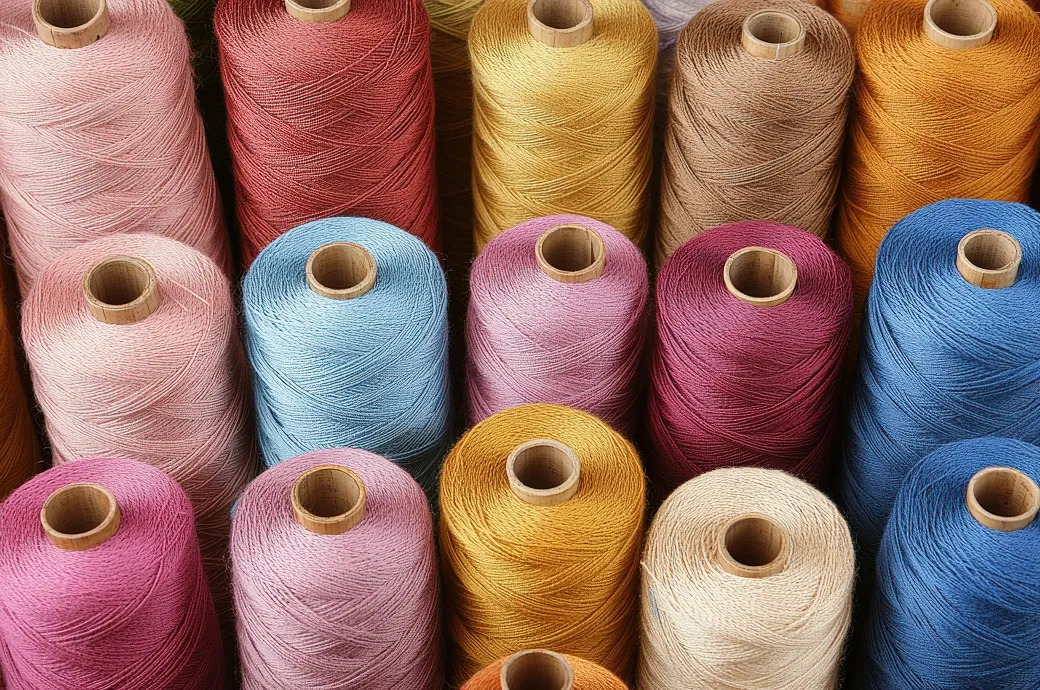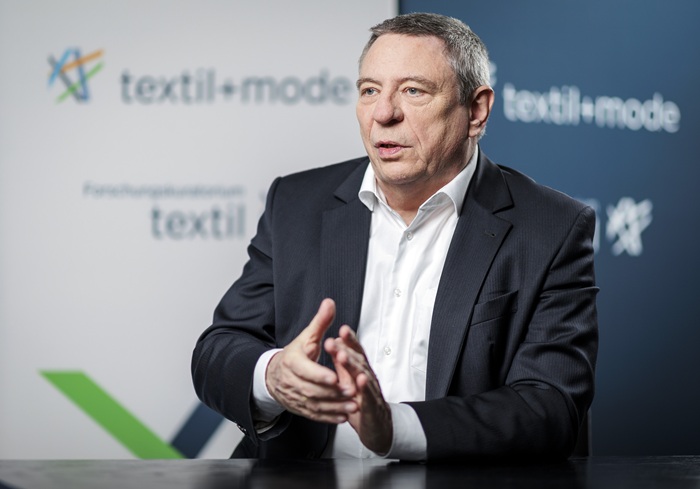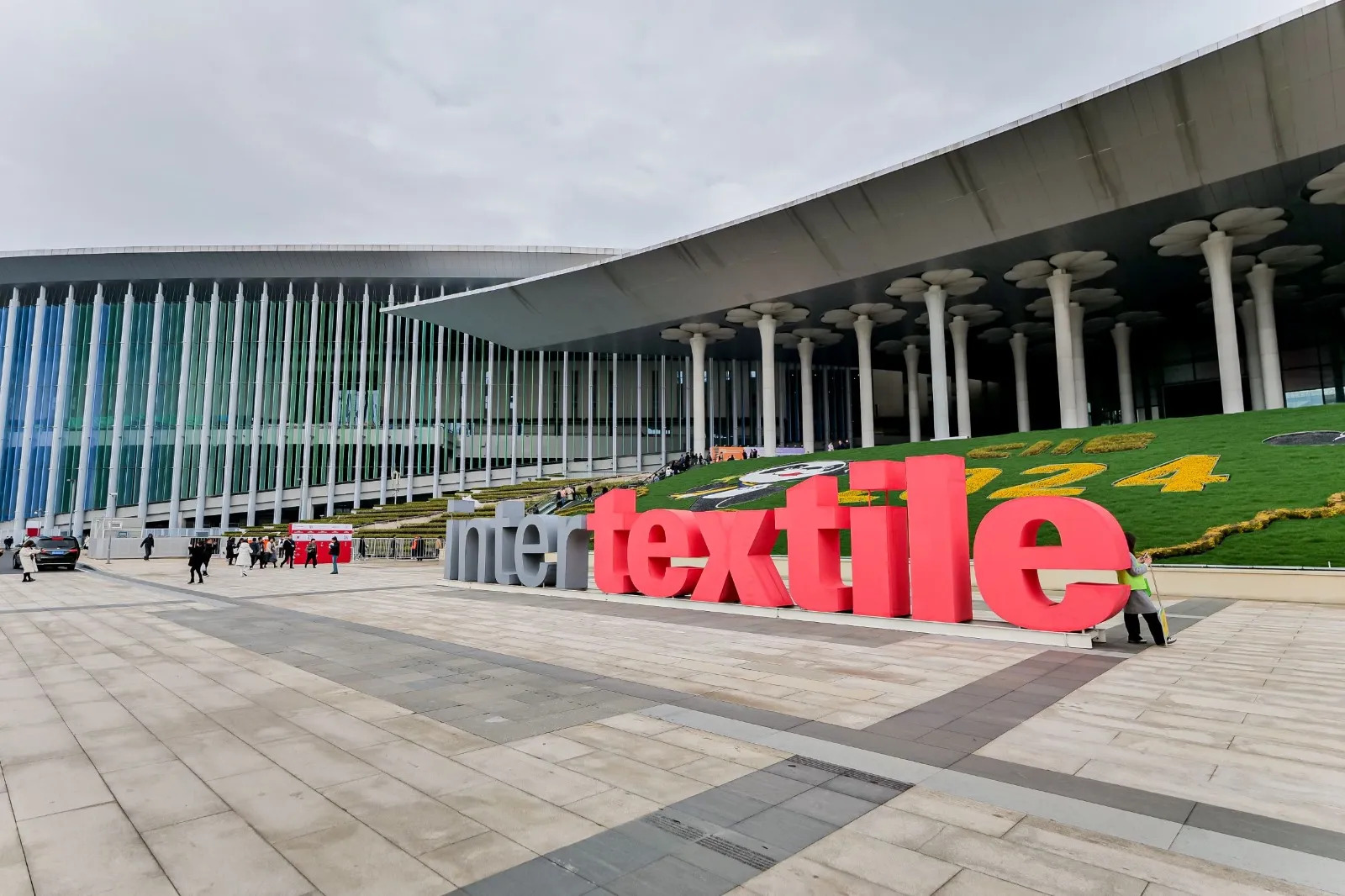FW
The second edition of Apparel Textile Sourcing Canada (ATSC) will go underway from August 21, 2017. The three-day apparel, textile and fashion event is one-of-a-kind programme for people from the apparel, textile, fashion and fabric manufacturers, factories and leaders from across the world to meet each other. The show promises to provide a platform to develop global industry connections.
ATSC has also secured a 50 per cent increase in exhibit space for the event that will be held in Toronto’s International Centre. The event will bring to Canada hundreds of apparel and textile manufacturers from around the world, including China, India, Bangladesh, Pakistan, US, UK, Mexico, Colombia, Peru and many more. It will include comprehensive trade show and conference.
The programme is to be held in association with Canadian and International partnerships such as the Canadian Apparel Federation (CAF), US based Fashion Business Inc. (FBI) and the China Chamber of Commerce for Import and Export of Textile and Apparel (CCCT). JP Communications, a business sourcing platform is the producer of the event. ATSC debuted in 2016 with more than 200 booths of merchandise and over 1,800 attendees.
A 21-member delegation of Chinese companies recently visited Pakistan. There they showed keen interest to enhance business collaborations in textile sector with their Pakistani counterparts. The Chinese delegation led by Deputy Director General, Department of Commerce, Zhang Shaoyun, Government of Xinjiang Uygur Autonomous Region visited the Islamabad Chamber of Commerce and Industry (ICCI). The delegation was representing textiles, garments, clothing and apparel and chemicals sector companies in China.
Speaking on the occasion, Shaoyun said that Pakistan was the fourth largest cotton producer in the world while China was leading exporter of textiles products. Thus both countries have great potential to complement each other and enhance cooperation in the textile sector for achieving better growth, he added.
He further said that China has modern textile technology and machinery and added that close cooperation between private sectors of both the countries in this field would not only yield mutually beneficial outcomes, but it would also help Pakistan's textile industry to upgrade itself and improve productivity. He hoped that visit of Chinese companies to Pakistan would also help in exploring opportunities for promoting bilateral trade, joint ventures, investment and multi-dimensional economic cooperation between Pakistan and China.
In his welcome address, ICCI President Khalid Iqbal Malik said that textile products played a major role in Pakistan's exports. Pakistani textile exporters were now focusing on value addition of textiles products to achieve better results and urged that Chinese textile companies should share technology and expertise with Pakistani counterparts to realize these goals, he said. Due to high domestic labour cost, China was relocating its manufacturing units to other countries and it should consider Pakistan as its first choice to take benefit of our educated and skilled labor at affordable cost, he added.
"ITME- TIT conference “Paradigm Shift-What’s Next in Textiles” focused on the theme ‘Targeting Indian textiles and clothing business at $300 billion’ was successfully conducted as a day-long conference on December 6, at the recent ITME exhibition in Mumbai. Who’s who from the industry, academia and government offered their valuable insights to make India the next global textile hotspot. TIT (The Technological Institute of Textile & Science) Conference was organised by FashionatingWorld/ DFU Publications and co-organised by TAI Delhi"

ITME- TIT conference “Paradigm Shift-What’s Next in Textiles” focused on the theme ‘Targeting Indian textiles and clothing business at $300 billion’ was successfully conducted as a day-long conference on December 6, at the recent ITME exhibition in Mumbai. Who’s who from the industry, academia and government offered their valuable insights to make India the next global textile hotspot. TIT (The Technological Institute of Textile & Science) Conference was organised by FashionatingWorld/ DFU Publications and co-organised by TAI Delhi
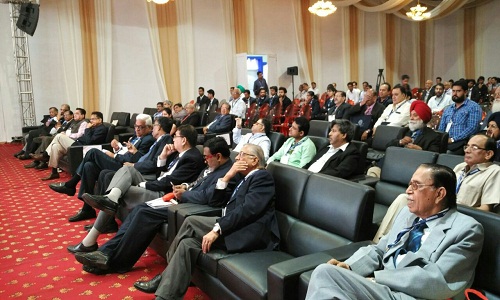
Chief guest Textile Commissioner Dr Kavita Gupta, in her keynote address, spoke about the schemes and campaigns run by the Centre to make India an attractive destination for textiles. “Though spinning industry is performing extremely well in India as compared to other sectors, although we don’t have incentives for spinning. Garmenting and technical textiles have a subsidy of 15 per cent, weaving and composite have subsidies of 10 per cent. Indigenous textile machinery only has 40 per cent share to the total demand, in this area we need to promote joint ventures. There is a pressing need for advanced machinery setups to be a competitive country in the global textile sector.” Elaborating further, she added, in garments, we have got additional 10 per cent subsidy that makes for 25 per cent subsidy in total. We need to do a lot of R&D in the textile sector as well as textile machinery sector. We understand the need to upgrade the industry, bring in more technology and that’s why we have incentives, capacities can be raised only by joint ventures and tie- ups. She also asserted that the government is providing assistance not only in the form of capital investments but other areas as well, it has decided to pay for the entire EPFO.
R D Udeshi, President (Polyester value Chain), Reliance Industries, spoke largely on the challenges facing the textile industry. He said, “We are living in a volatile, uncertain, complex world with a lot of ambiguities. We have an ambitious target of $600 billion by 2024-25, now we are talking about how to reach $300 billion target, it is always easy to make projections but implementation is never a piece of cake.” Udeshi said globally, textile is fairing much better than other commodities or sectors. In India, there is a change in the pattern of textile industry; we have demographical advantages, with the youngest population in the world. Still countries like Cambodia and Vietnam are growing faster than us, despite the fact we are rich in resources. “We have a good refining capacity unlike China, all we need is to utilize it, add value in it rather than exporting it, the export of raw material should be replaced by end product,” he added.
Prashant Agarwal, JMD, Wazir Advisors, emphasised not to focus on statistics rather maintain excellence in what we already have in place. “We should start working to achieve these growth numbers, there are a lot of areas to work on, moving from $120 to $300 billion means adding $180 billion is a herculean task. Today, global trade is about $7 75 billion, which will be somewhere around 1.25 trillion by 2025. We are growing by 8 per cent CAGR for the last few years; we are talking about 10 per cent of the total trade, so this is undoubtedly doable. The key lies in implementation,” he pointed out.
India’s share in global textile
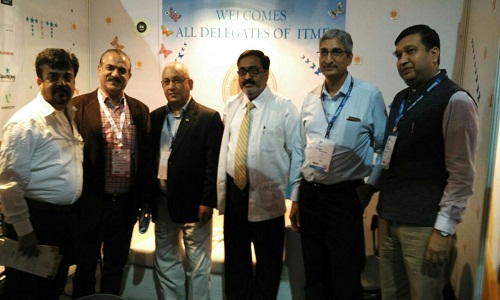
The second session was addressed by Subhash Bhargva, MD, Colorant Limited. He said global textile trade has fallen from $827 billion to $776 billion during 2014-15. But in this fall again, India has been able to grow from $37 billion to $40 billion. It is heartening that India has maintained its share in this downfall, this shows our competitiveness. Similarly, exports have risen by six per cent to the US, 32 per cent to UAE and seven per cent to Canada. Over all in value terms, it is total four per cent.
The third session saw, Peter Golden, Head (Product Development), Saurer speaking on technology and the challenges that global textile industry is facing currently. “We believe that the major challenge in the textile sector is labour – skilled and unskilled both. There are concerns pertaining to environment. The need of the hour is to provide the right product, our focus should be on productivity, efficiency, and consumer’s profitability,” he said.
Focus on sustainability
A session on sustainability, ‘Sustainability, the only way forward’ was also a part of the event where prominent industry speakers shared their views. One of the presentations were attended by N N Mahapatra, President, Colorant Limited. “There is a lot of buzz around sustainability. We, at Colorant, focus on sustainability and keep introducing technologies that save the environment in the long run,” he said. Dr B K Behera, HOD Textiles, IIT, spoke extensively on technical textiles, its importance for India, and highlighted the innovations they are doing in this area. Sandip Arora, CEO, Polyspin India that has a joint venture with Eksoy, a multinational company in chemicals from Turkey, spoke about how Eksoy is offering solutions to save environment by replacing urea, less usage of water and energy. Ajay Sardana, Chief Sustainability Officer, Grasim spoke about sustainability efforts taken up by the group. For them, it is simply a business case scenario rather than a charity as considered by many.
The last session was on Technical Textiles presented by VDMA, a German federations of industries. Their members from various technical textile sectors made insightful presentations.
All in all, the conference offered insightful experience of industry stalwarts and gave the audience a lead to take the growth trajectory ahead.
The Woolmark Company has announced four winners for its inaugural Wool Runway design competition. The competition is aimed at giving tertiary students a kick-start in their fashion career. Ankit Kajla (winner), Kavya Doultani (1st runner up), Miloni Kothari and Apoorva Wadhwa (2nd runner up) have won financial support, and exciting internships with Raymond, Madura Fashion & Lifestyle and fashion magazine Grazia. Dressed in a stunning Merino wool outfit designed by Nachiket Barve, actress Vaani Kapoor presented the awards to the four winners and congratulated their innovative use of wool in their designs.
Wool Runway raises awareness and also educates next generation of consumers and inspires emerging fashion designers to work with Merino wool. The students’ designs were a spectacular visual representation of avant-garde, and wearable fashion that highlighted the versatility of Merino wool.
The impressive judges panel hand Sudhanshu Pokhriyal, President, Raymond, Karunesh Vohra, Creative Director, Louis Philippe & Simon Carter, Mehernaaz Dhondy, Editor of Grazia India, Creative Director and founder of, Kapil Batus and Fashion Designer Payal Khandwala. The jury selected the winning designs against strict judging criteria, including the use of at least 80 per cent wool per outfit.
A key highlight of the awards night was an exclusive fashion show held by the House of Raymond which included made to measure, ready-to-wear and fine fabrics ranges.
With data on the most searched trends in 2016 in both the US and UK, Google, in its second annual report has focused on which fashion trends grew in popularity and which ones faded out this year. Google reveals out both biker jeans and ripped jeans have been ‘sustained risers’ in 2016 indicating a steady in growth in popularity over the past years.
Compared to seasonal risers like bomber jackets or the rising stars like body suits, Google’s data shows these two trends, specific to denim, experienced the most promising rise in popularity during 2016. In declining trends, Google reports a drop in crotch pants and acid-wash jeans in 2016.
Focusing on the aesthetic trends that drive these items, Google cited ‘Military Chic’ as one of the most searched trends with bomber jackets, biker jeans and ripped jeans falling into this category for both men and women. It also confirmed that embroidered was the most popular additional keyword entered in both the UK and the US.
Denim was a common material consumers searched for in bomber jackets, though it finished below the top five with leather and satin being the most popular material choices. However, denim bomber searches increased this year by 155 per cent in the US and 99 per cent in the UK.
In women’s trends, the report note off-the-shoulder tops are a rising star in both countries polled. Lace proved most popular, but Google shows that denim and chambray are seeing strong growth in both markets, coming in at number two. Similar to off-the-shoulder tops, jean rompers were also trending across both countries with denim as the second most popular material behind lace.
In its recap, Google noted kids’ clothing is beginning to reflect adult clothing in terms of interest. Google also reaffirms that fashion is becoming more androgynous, noticing that garments like bomber jackets and rompers are being paired with gendered terms like men and women.
The third edition of BSTIM (Best Solution in Textile Manufacturing) European knitwear fair will be held in Igualada, a textile city near Barcelona on February 22-23, 2017. Nearly 145 factories and 2,500 industry professionals are located here. IN this edition the organizer Catalan Fashion Cluster created a highly innovative image that project into the future without losing sight of the origin.
The organisers observed the need for speed, design, quality and innovation, which are requirements that can only be satisfied by means of local production. BSTIM has been set up to help address these needs. The fair will show the different solutions offered by local textile suppliers with a strong textile know-how and experience.
The fair aims to bring together the textile industry with brands and wants buyers to live the BSTIM experience. They are looking forward to showing the creativity, solvency and capacity of those suppliers and thus stimulate trade relations between manufacturers and international partners.
Markets abroad are increasingly asking for more quality products that are made in Europe. Studies form the Centre d’Informació Tèxtil (Textile Information Centre) and FITEX (Technological Centre) estimate that Spain’s textile industry has the capacity to take on an additional 30 per cent of the current activities. The last edition of BSTIM welcomed 1,500 professional visitors that included buyers from high-premium brands such as El Corte Inglés, Nice Things, Wom&Now, Rita Row, TCN, Sita Murt, and Naulover, and buyers from different international groups like Inditex Group, Desigual, and Cortefiel.
Textile industry will be the biggest winner of demonetization, believes Smriti Iran as workers will get minimum wage thanks to new 'transparent' digital payments. Workers in the textile industry will be among the biggest beneficiaries of the Centre's demonetisation move, Union minister Smriti Irani has said.
Speaking at the Mail Today Make in India Fashion Summit, she also credited Prime Minister Narendra Modi for making khadi ’cool’ again. The event, held in New Delhi, treated fashion enthusiasts to a day of stirring discussions as well as the latest buzz in couture and policy-making with star-studded panels comprising leading politicians and designers.
Getting paid through digital payment s will end uncertainties on whether a labourer was getting at least the minimum wages. Earlier labourers used to complain about not getting their dues as decided and there was no record that showed whether they were getting at least the minimum wages, the minister averred. The session entitled ‘Reinventing Khadi - Fabric of the Future’ saw panelists dispelling various myths about the hand-spun cloth while also focusing on its road to the global platform. Khushboo Aggarwal, Creative Head at Ritu Beri Designs, explained khadi is aptly named 'vichitra vastra' because it isn't just a fabric but a serious thought. Union minister Kalraj Mishra said khadi has once again gained prominence among the masses just like it had during the Independence struggle.
As uncertainties over actual date of rollout of GST persists, the textile industry has urged the government to bring parity in the excise duty structure of manmade and cotton fibres in the coming Budget itself. The suggestion was made at a pre-Budget meeting with finance minister Arun Jaitley . The industry was under the assumption that with the introduction of the GST regime, its demand for erasing the duty gap could automatically be addressed. However, with the Centre and states yet to iron out differences on several sticking points, experts have ruled out the introduction of the new indirect tax regime at least before September next year.
The industry has been demanding a reduction in the excise duty on manmade fibres claiming that such a disparity was preventing domestic synthetic fibre producers from scaling up operations. The huge duty difference has ensured that India’s textile market remains cotton-driven, in a stark contrast with the trend globally, apart from eroding the country’s export competitiveness in the manmade fibre segment.
OP Lohia, Chairman of Indo Rama Synthetics observed since GST is unlikely to come in before September, the government should, at least, cut excise duty on manmade fibre to 6 per cent from the current 12.5 per cent. It would also set the stage for the levy of a 5 per cent duty for both cotton and man-made fibres under the GST regime, as many are expecting, he said. Synthetic fibre is a poor man’s necessity, as cotton fibre is more expensive.
The excise duty on manmade fibres, which was as low as 4 per cent in 2009-10, was raised by the previous government. This came as a shocker to synthetic fibre producing companies that had invested much in expanding capacity to cater for growing domestic demand for manmade fibre, Lohia added.
A seminar-cum-exhibition on investment opportunities in technical textiles and non-wovens was held in Coimbatore on December 22. It threw light on market opportunities for new entrants in the Indian technical textile space. Organised by the Federation of Indian Chambers of Commerce and Industry and the Office of the Textile Commissioner, the event focused on encouraging domestic players to invest in the technical textile sector and highlight the initiatives taken by the government towards attracting investments in technical textiles and drive growth.
The Indian market for technical textiles is projected at close to Rs 92,500 crores, growing at a CAGR of 11.8 per cent. The market is expected to reach Rs 1, 16,217 crores in 2017-18. India is looking at technical textiles. As GDP grows, demand for technical textiles in India will grow. India has special technology missions for technical textiles. Different centers of excellence have been identified for various segments of technical textiles. Geo textiles are used in roads and infrastructure. There are schemes for the use of geo textiles in the north east and in hilly areas. The country is promoting the use of agro textiles. Agro textiles are used in agriculture for conserving water and improving crop productivity. Medi textiles are used in hospitals and health care. There are industrial textiles, protective textiles.
The 13th AGM of Joint Apparel Association Forum (JAAF) was held recently. Prominent among the speakers was Noel Priyathilake, outgoing president of the forum. He said Sri Lankan authorities must request India for removal of quotas imposed on textile and apparel sectors. Citing the reason, he said that this was to create a sectoral balance in trade between the two countries whereby Sri Lanka would have a high potential to cater to emerging middle income population in India. However, if the removal of apparel quota is not done local apparel industry would not see significant benefit through the proposed Economic and Technology Cooperation Agreement (ETCA).
Bilateral trade happened to be a priority item in their agenda. He said Singapore was not an important trading destination yet, and they have not offered significant market access to Sri Lanka. The country is now targeting more towards regional economic partnerships or regional economic integration. The Asian focus of these negotiations would be culminated in a strong manner depending on the way the new US administration focuses on fair bilateral trade in place of regional partnerships. Perhaps, this approach may change the trade development agenda and Asia will become important even within our trade and Big Asia may be writing the trade rules for the world if they foster strong regional or Asian economic partnerships.


